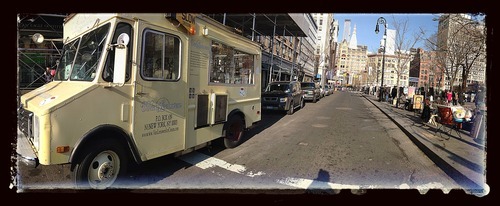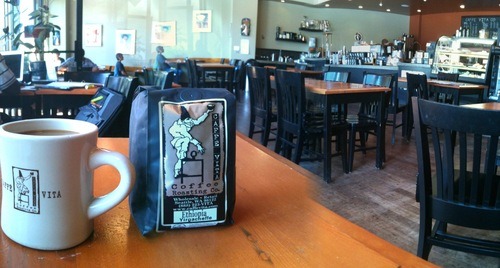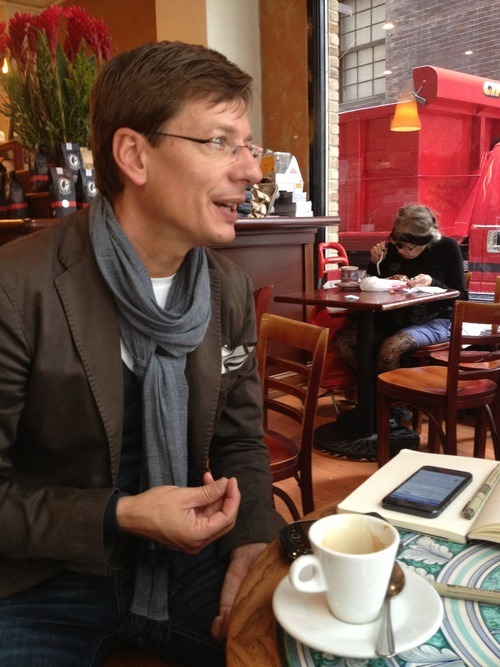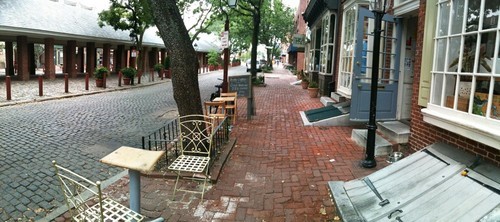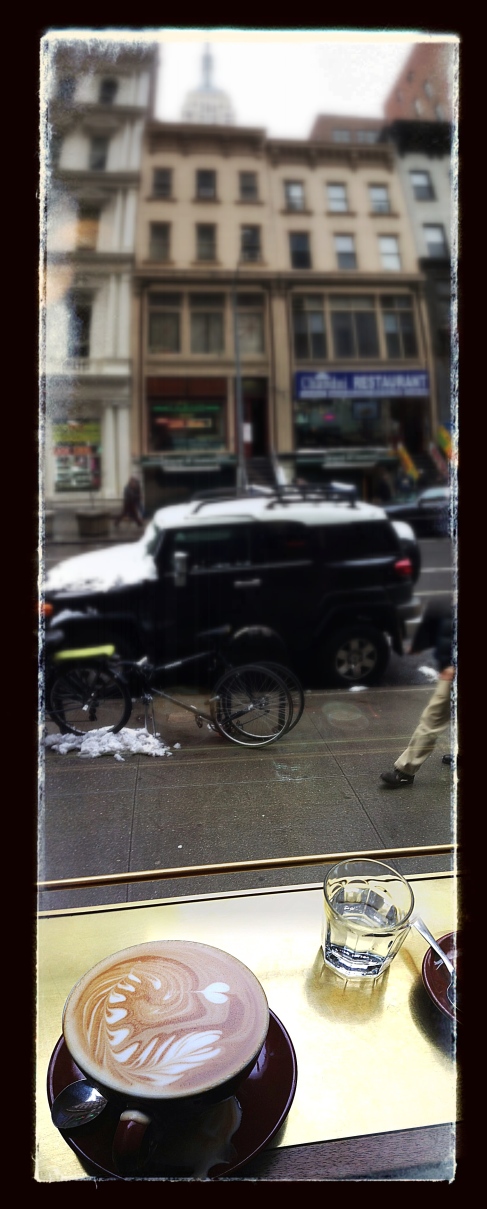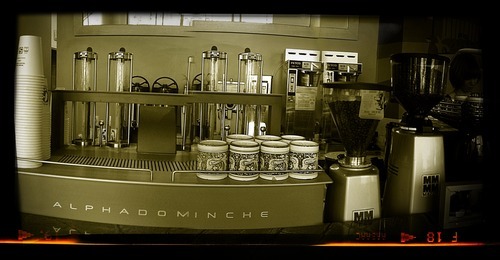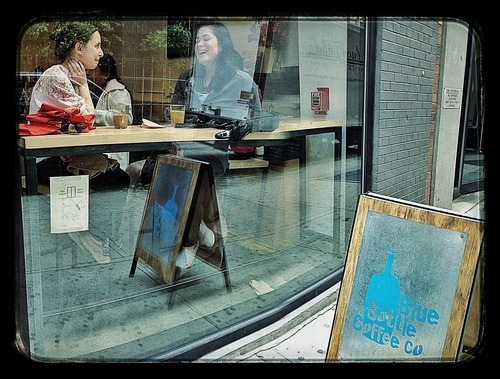
Just below the High Line, Blue Bottle Coffee’s Chelsea location has brought a little San Francisco to New York. Open since February, 2012, a visit should be on everyone’s coffee bucket list. Tiny in size (only four seats downstairs and five at the Siphon Bar upstairs), what they lack in space they make up in presentation, service and phenomenal coffee.
A friend from London was visiting and we spend the morning checking out galleries in Chelsea and walking the High Line. Unfortunately, many galleries were closed due to the Memorial Day holiday. After staring at too many locked doors and windows we decided to have a bit of lunch at The Half King (and a spot of Boddingtons) and walk down to our coffee destination.
As soon as we went inside, we were greeted with the smiling faces of three Baristas eager to help us navigate the selections, immediately dispelling the notion that New York coffee shops can be snobbish and off-putting at times. My daughter had been waiting patiently for dessert and I noticed Mast Brothers chocolate on the counter. One of the Baristas recommended that she try the San Franciscan company TCHO’s fair trade offerings instead as they are a bit sweeter. She picked the Mokaccino and declared that it was one of the best chocolates ever. I unfortunately didn’t get to try it as her idea of “sharing” was to pick off two flecks and deposit them in my hand.
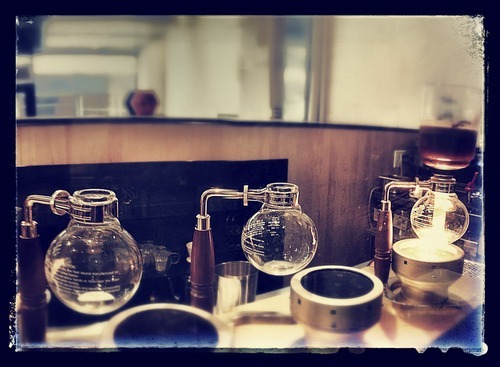
The Siphon Bar
Anyway, the coffee….. while the rest of my group stayed downstairs to have a few pour overs, I scurried up to the Japanese siphon bar and snagged the last remaining seat at the counter. I ordered the Kenyan roast ($10), personally selected for the bar by Michael, the siphon zen master. He first presented me with a glass of water to cleanse my palate. Next he had me try some tea made from a coffee plant. Sweet and fruity, it was quite appealing. I was also offered some small pieces of in-house prepared marshmallow, a gesture I found a bit superfluous. Next Michael presented the beans and then offered them again after grinding. Earthy notes with a hint of fruit, it had a lovely delicate nose.
While I peppered him with questions and perhaps a bit too obnoxiously took tons of video and photographs, Michael prepared the coffee. The siphon was first invented in 1840 and I believe that this is only the second halogen powered model in the US, the other in Blue Bottle’s flagship store in San Francisco. The alchemy is a wonder to watch (see the next post for a Vine video of the process). And the coffee? It was remarkable, roasted perfectly, the brew method brought out wonderful stone-fruit flavors with a nice balance on the finish.
All in all, I am truly amazed at my experience Blue Bottle has managed to pack an impressive coffee punch into less than 200 square feet of New York real estate.
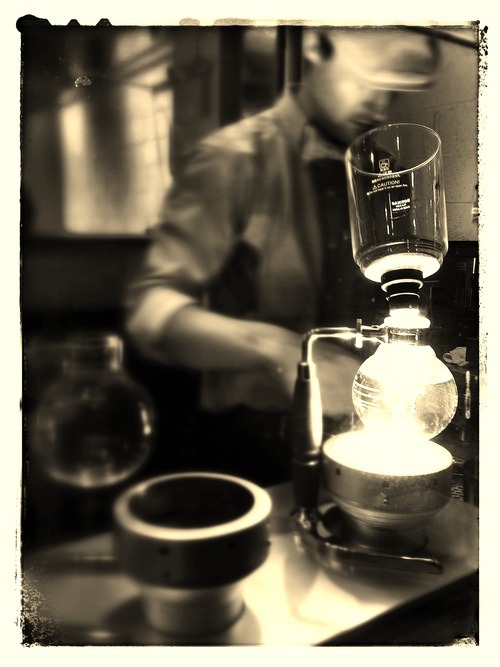
Michael preparing my coffee at the siphon bar
http://www.bluebottlecoffee.com
http://www.tcho.com
www.thehighline.org
Support CoffeeGuru download the app here: https://itunes.apple.com/us/app/coffeeguru-indie-coffeehouses/id547969523?mt=8

